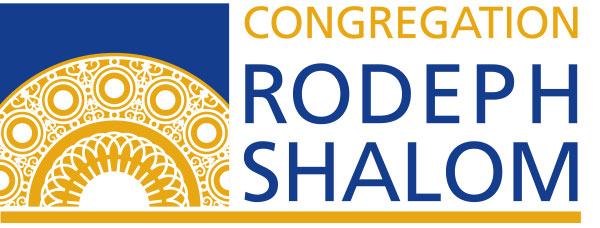Yom Kippur Address delivered by RS President Michael Hauptman on September 19, 2018.
There’s a story in the Talmud about an old man planting a fruit tree by the side of the road. A traveler walking by asks him how long it will be before that tree produces fruit. The old man says, “About seventy years”. “Seventy years? Do you expect to be here in seventy years to enjoy that fruit?” “No, but just as my ancestors planted fruit trees for me to enjoy, so I will plant for my children.”
His planned gift ensured that his memory would come alive every time someone enjoyed a piece of fruit from his tree.
Ninety years ago this week, the president of Rodeph Shalom, Charles Edwin Fox, stood on this spot, at this reader’s table, and watched as the Board of Trustees marched into their new sanctuary carrying the Torahs onto the bema and placed them in the ark. As a string quartet and the organ played, the members of the congregation, sitting in your seats, marveled at the magnificent new space that their contributions had made possible. They could not know on that September evening in 1928 that in just over a year, the worst economic crisis in US history would profoundly change their lives and impact events around the world for the next two decades.
We tend to think of historical events that occur along an extended timeline as individual episodes experienced by completely different populations. We don’t realize that it is often the same people experiencing these milestone events that may occur decades apart. Whereas some lives may have ended, and others may not yet have begun, there are those whose lifetimes connect them, like an intricate woven fabric of overlapping threads.
The children who participated in the lighting of our Eternal Light on that joyous evening in 1928, included the young men sent a dozen years later to fight in Europe and in the Pacific. When they returned — and some did not —they were married in this room, under that light. And as they began to raise their families, they moved out of the city, along with hundreds of other Jewish families, to places like Bala Cynwyd and Elkins Park where so many congregations were building modern new buildings and leaving their older urban synagogues behind.
But we didn’t do that. In addition to establishing a suburban presence to serve our young families, we, unlike every other Jewish congregation that once lined Broad Street, stayed here. Perhaps it was because the parents of those children who lit our Eternal Light for the first time were now in leadership positions in the congregation and remembered the joy and pride of that evening thirty years earlier, and remembered their children’s weddings on this bema, and the words that the Rabbi spoke at their parents’ funerals in this sanctuary, and the sorrowful sounds of the cello on Kol Nidre that reverberated only as it could in this irreplaceable room. And they could not abandon it.
For nearly fifty years, we maintained our two locations. Generations of congregants worshiped and attended religious school at Suburban, coming into town for High Holy Days and special occasions so that their most cherished memories and their most profound experiences would be indelibly linked to this sacred space.
Even as the neighborhood around us began to feel less safe, and the sanctuary began to show its age, we still came. The children who first attended the suburban center‘s religious school were now Trustees of the congregation. Shifting demographics compelled them to make the painful decision to sell the suburban center that their grandparents had established and focus instead on restoring and expanding the awesome building that their great-grandparents had built and had sat in your seats at its dedication.
Winston Churchill said, “We shape our buildings, and afterwards, they shape us.” So much of who we were and who we, as a congregation, have become is contained within the walls of this room. It has been witness to thousands of Shabbats and b’nai mitzvah, hundreds of baby namings, weddings and funerals. It was listening when we heard the news about the terrors of Kristallnacht, the horrors of the Holocaust, and the birth of the State of Israel. It consoled us during the struggles of the Civil Rights Movement, the assassinations of national leaders, the wars in the Middle East, and the events of 9/11. In its 51st year, it witnessed our first Shabbat morning bat mitzvah and, in its 89th year, the installation of our first woman senior Rabbi.
As we celebrate the 90th anniversary of this sanctuary throughout the coming year, let us be generous in honoring the space that has been so generous with us. Let us pay tribute to those who were here in this room as the Torahs were marched down the aisles, whose voices remain in these walls and whose contributions continued to support, maintain and restore this room long after their threads had ended.
We can all plan a legacy gift for those congregants that come after us. We can’t know what events this room will bear witness to tomorrow, but we can plant the trees to bear fruit for our grandchildren, so that they will be able to hear our voices in these walls and marvel at the priceless gift we’ve left them.
Happy Anniversary and Shana Tova.
